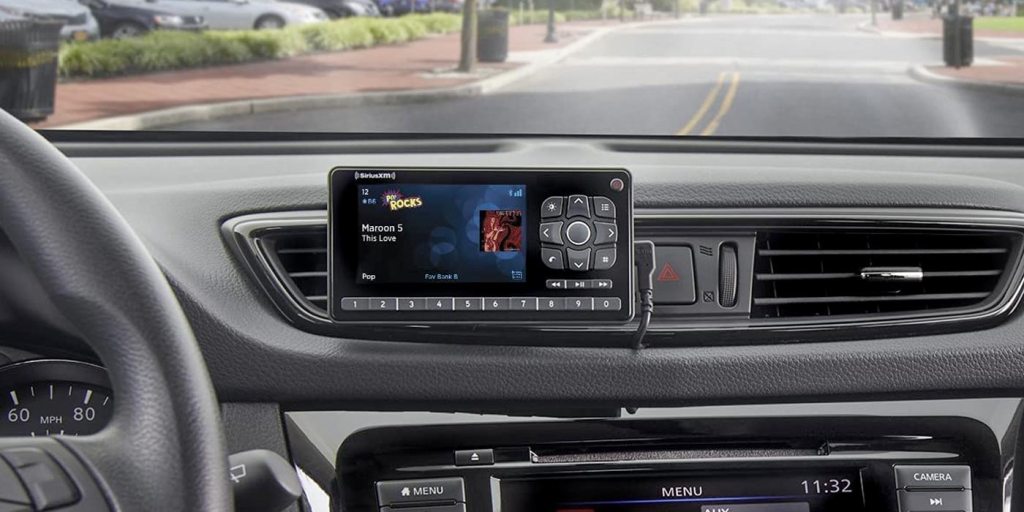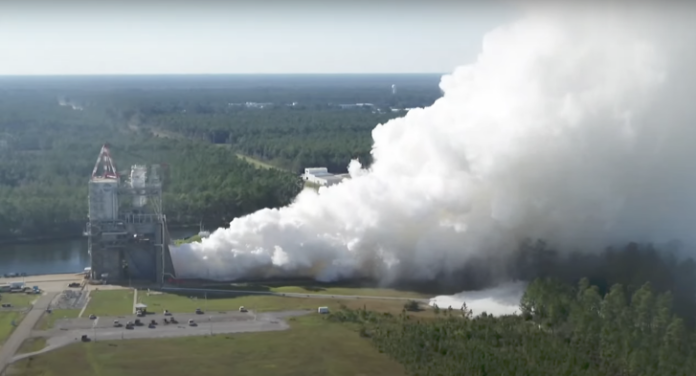
The National Aeronautics and Space Administration (NASA) is busy testing its rocket engines for the Space Launch System (SLS) rocket, which is the backbone of its plans to establish a permanent human presence on the Moon through the Artemis program. The SLS is the world's most powerful operational rocket, and it is slated to fly to the Moon again a year from now as part of the Artemis 2 mission. Artemis 2 will be the first time that humans undertake a journey to the Moon after the Apollo program, and it will see a crew of four aboard the Orion spacecraft and orbit the celestial body before landing on Earth.
NASA Successfully Tests RS-25 Engine For 550 Seconds As Part Of Fresh Series of Certification Runs
As it tests the rocket engines at the Stennis Space Center in Mississippi, NASA is also busy installing the engines on the SLS's core stage at it Michoud Assembly Facility in New Orleans. In fact, the space agency finished structurally joining the engines on the massive core stage, after it mounted them to the rocket in late September.
Unlike SpaceX, which tests its rockets during development, NASA assembles the vehicle first and then lights the engines up on the complete system at the time of launch. However, the engines are put through static fire tests before they are mated to the rocket, and these simulate launch conditions to ensure that the engine will perform as expected during flight.
The RS-25 engines powering the SLS are the same design that flew on the Space Shuttle. The first Artemis mission, which flew last year, used some engines that had already flown on the Shuttle. However, future missions will use new engines with an upgraded build.
Even though NASA is yet to confirm, the RS-25 engine test at the Stennis Center appears to be a success on the face of it. This is because the test met its intended duration of 550 seconds or nine minutes ten seconds. The engines being tested right now are upgraded variants of those that powered the Space Shuttle.
In terms of thrust, the engine was tested at power levels similar to its flight profile during the first stage of an Artemis mission. The full SLS rocket is made of four RS-25 engines and two side boosters powered by solid rocket boosters. While the RS-25 uses liquid propellants, the solid booster uses powdered fuel, and its engines cannot be turned off after ignition. According to NASA, the test aimed to generate 418,000 pounds of thrust.
Tests such as today's run are part of a series that validate the RS-25's design and build before Aerojet Rocketdyne can proceed to production. Changes made to the newer engines include new manufacturing processes and lighter components that end up reducing production costs. It takes the RS-25 roughly 500 seconds to power the SLS rocket to space, after which the center core separates from the second stage which then places itself on the right trajectory for a lunar mission. During the run, engineers continuously monitor the engine profile and its valves and systems to ensure everything is in working order and there are no accidents. They also monitor the hydrogen and oxygen tanks that provide fuel to the engine.
You can take a look at the full 550 second duration test below.
WccftechContinue reading/original-link]







